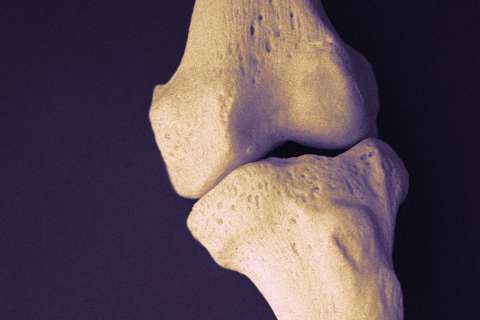Dear Doctor: I’ve been running during the lockdown, and about a month ago, my outer thigh started to feel like it’s clenched up, and the outside of my knee hurts sometimes. My roommate says it’s most likely that my IT band is too tight and needs to be stretched. What does that mean?
Dear Reader: The IT band is a long swath of connective tissue that makes it possible for us to use our legs to travel. It starts at the top of the pelvis, runs along the length of the outer thigh and ends at the shin, just below the knee, connecting a hip flexor muscle and the gluteus maximus with the outside of the shin. It’s made up of a connective tissue called fascia, which is a sheath that surrounds and encloses muscles and also connects them to bone. You’ll hear the IT band referred to by different names -- the iliotibial band or the iliotibial tract. For fellow science nerds, “ilio” derives from the word ilium, which refers to the flank or hip area. “Tibial” refers to the tibia, which is the larger of the two bones in the lower leg, commonly known as the shin bone.
One of the jobs of the IT band, which is the largest piece of fascia in the human body, is to stabilize the knee. It also facilitates movement at the hip. An intriguing study from scientists at Harvard has recently suggested an additional function. The researchers found that, due to its inherent elasticity, the IT band collects and disperses energy, much like a spring. They suspect that in addition to conferring stability to the joints in the knee and the hip, it also plays an important role in humans’ ability for propulsive speed, particularly in running and jumping.

The idea that the feeling of tightness you describe can be alleviated by stretching the IT band is a bit of a misconception. While fascia is inherently elastic, it’s also extremely strong. You can’t actually stretch it to make it looser or longer. What you can do is stretch the muscles of the hip and thigh, which research suggests play a role in the “it’s-too-tight” problem.
With your occasional outer knee pain, you’ve referenced what may be an overuse injury known as IT band syndrome. The pain can become noticeable during weight-bearing movements, such as climbing or descending stairs; in the down stroke of cycling; or while doing lunges. One theory regarding the pain involves repetitive friction during knee flexion. In runners, it has been associated with running in the same direction when on a circular track, excessive mileage and a lot of time spent running downhill. In this case, as well, stretching and strengthening the muscles of the hips and thighs can be helpful.
Someone dealing with IT band issues should first focus on decreasing local inflammation. This can be done with a change in how and how much you exercise, and with nonsteroidal anti-inflammatory medication. Once inflammation is under control, stretching and strengthening exercises can safely be added to your exercise routine.
(Send your questions to [email protected], or write: Ask the Doctors, c/o UCLA Health Sciences Media Relations, 10880 Wilshire Blvd., Suite 1450, Los Angeles, CA, 90024. Owing to the volume of mail, personal replies cannot be provided.)





